The Co-op Condition
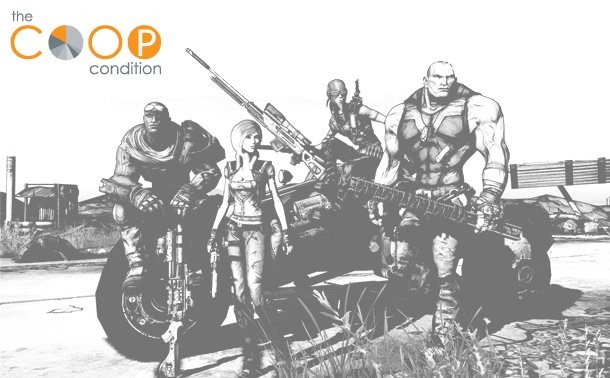
In our January issue of Game Informer we examined the current co-op condition, asking vocal gamers what they want to see in future cooperative titles. And what they don’t. We surveyed nearly 8,000 readers to find out if social or solo gaming is paramount, if split-screen play is DOA or if there is hope for multi-gamer households. We even asked if they would be willing to pay a premium to play single-player franchises with their buddies. Co-op God of War perhaps? The results of our poll were interesting, to say the least.
Utilizing the infinite space the online format affords us, we now expand upon our print feature, offering up insight into the industry from key staffers of influential co-op development houses. These experts present their definitions of cooperative play, expand upon the co-op pipeline for their particular products and attempt to explain away some of our co-op qualms. They’ve got reasons as to why split screen is such a technological burden or why couch co-op doesn’t play nice with the web.
Read on for an insider’s look into the current state of co-op affairs, interspersed with results from our recent reader poll. 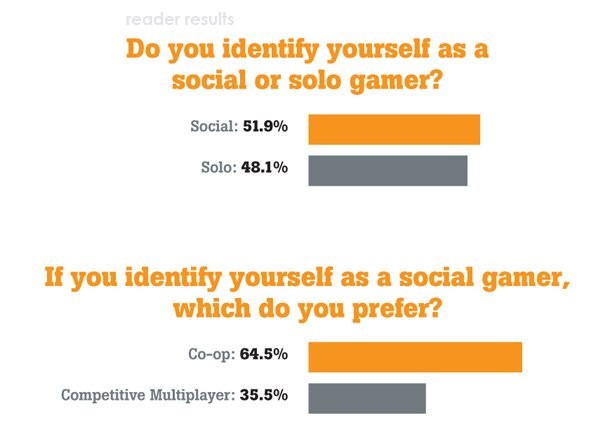
The Experts
With cooperative play increasing in popularity, development houses worldwide are starting to embrace the trend. But where many have thrown their hat in the ring, few have excelled. Notable co-op franchises such as Halo, Gears of War, Left 4 Dead and Army of Two are joined by new contenders like Gearbox’s Borderlands. Traditionally single-player IPs are even starting to take note, with Uncharted 2 and Modern Warfare 2 both adding sizable co-op segments to their titles. Representatives from these co-op powerhouses weigh in below. 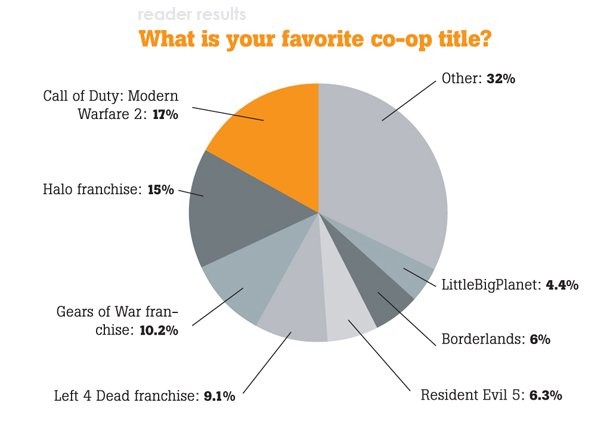
[Our Experts] On What Qualifies As Co-op…
Cooperative gameplay means many things to many people. For some it harkens back to shared screen play in the arcades. For other it signals sitting side by side with a friend throughout an entire cooperative campaign. And for some, cooperative doesn’t require being helpful – griefing your way to a common goal can be just as fun. It turns out developers are just as divided by their definitions of co-op play.
“I think a co-op experience is one where you can team up with a buddy and have an awesome time. Obviously depth is a factor, but each team needs to make a choice about what they will build. In terms of scope it’s tough to compare what we do on Army of Two (vs. COD for example). In AO2, our focus always has always been to make the experience 100 percent co-op from start to finish. We see a lot of games doing it as a mode, and those are definitely fun as well, however for our audience we really want to deliver a completely integrated game where it’s all co-op all the time.”
Reid Schneider, executive producer, Army of Two: The 40th Day
“This largely depends on what gamers want out of their experience. I can mention from firsthand experience that pulling off story-based, integrated co-op for the duration of a full length campaign (8+ hours minimum, on average) is a lot of work not only from a level design standpoint but also from code and writing. You always have to account for the players’ locations, ammo balancing, scripted moments, cinematics triggering, etc. Development-wise it is sometimes seen as an easier win to simply have custom scenarios for co-op, however if you’re not careful it can balloon into more work, simply more contained in its own ‘bucket.’ At the end of the day I'm just happy to play games with others in a non-competitive manner.”
Cliff Bleszinski, design director, Epic Games
“We'd define a co-op experience as one where people are working together in a game toward the same goal. There are a lot of execution details that you have get to right to be successful just like any other product, but the difference with a co-op game from others is that you're not trying to craft a narrative in the player's mind, you're giving the players the tools to craft it with each other.”
Erik Johnson, project manager, Valve
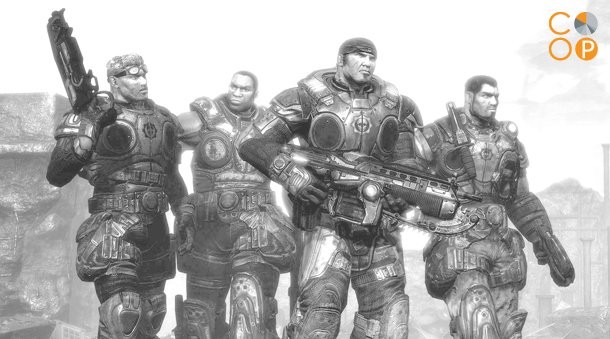
On The Co-op Pipeline…
If co-op play is on a developer’s radar, are they forced to commit to the design decision in the early stages of ideation? Or can they wait it out to see if it will fit in later down the line? To successfully and seamlessly integrate co-op play, can it be anything other than a day one decision? Our experts seem to be united in their opinions – the sooner, the better.
“If you’re going to make the experience fully co-op, and highly integrated into the game, then I believe it needs to be a day one decision. Everything from the networking model, level design and spawn locations need to be considered. It’s not a path I would go down lightly. I’ve had the chance to speak to some other teams and generally it’s a feature they want to have, but along the development cycle it gets dropped. The reason for this is that it introduces a ton of challenges and design considerations which need to be dealt with properly to be successful. It’s also give and take…meaning when you choose to add co-op, it generally means you will have to drop something else.”
Reid Schneider, executive producer, Army of Two: The 40th Day
“I can only speak from personal experience that when we build a game we integrate co-op from day one, from the ground up. In Gears 2, we had integrated story co-op through the entire campaign and then introduced Horde, which turned out to be many gamers' favorite modes. Simply put, I want a blockbuster movie I can tear through with my friends, locally or online. Add in a mode where we can all deal with wave after wave of baddies? Sold!”
Cliff Bleszinski, design director, Epic Games
“We’ve always started projects by deciding whether they were a single player, cooperative, or competitive multiplayer game. In Half-Life 2, the puzzles, vistas, and combat were all designed for one player to feel like they are the most important person in that world. Adding a second person to the game would be technically feasible, but the experience of both players would be less than the sum of their parts, because of the original goal. For us, it feels like something that you need to be designing around from day one to get the right kind of experience for whoever your audience is, whether it is single player, two teams playing against each other, or a few friends playing together.”
Erik Johnson, project manager, Valve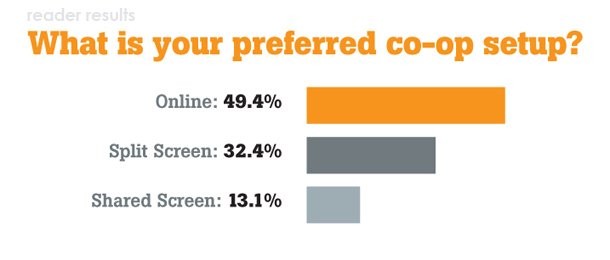
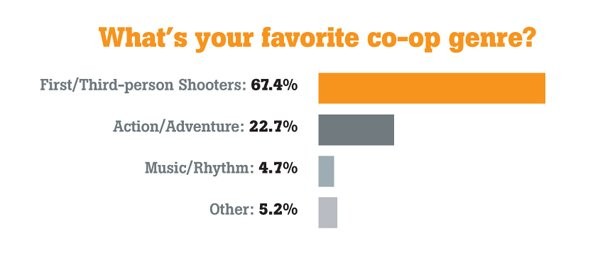
On The Best Co-op Genres…
Are all co-op genres created equal? Are there some that would lose integrity if a second player was introduced? Is it worth the sacrifice?
“Shooters definitely lend themselves well to the co-op experience, but personally I think it would be great to see more games getting into this space. I think true hardcore survival horror might be tough with co-op. Obviously Resident Evil 5 was a co-op experience, but that was much more focused around exploration and shooting then previous iterations. Personally, I think it would be awesome to see a God of War or Dante’s Inferno style game in full co-op. We had an idea for something like that a few years ago, but since shelved it to focus on Army of Two.”
Reid Schneider, executive producer, Army of Two: The 40th Day
“Sure, some immersive narrative-based games may have less initial impact due to a second player jumping around on your head. The opening scenes of BioShock may have had less weight if you didn't feel truly alone entering into Rapture fresh from a horrific plane crash in which you're the only survivor. However, give me a chance to do that with a friend and I'll gladly take it.”
Cliff Bleszinski, design director, Epic Games
“When we're building a game in the Half-Life world, a lot of our effort revolves around making the player feel like they are the most important and skilled person in a world that is bigger than they are. In a co-op game we're trying to build a set of game rules and tools that allow players to create experiences for each other. It’s less about the genre or particular game property, and more about the kind of experience you want your customers to have when they play your game. That said, fighting off a zombie apocalypse with your friends is a lot more fun than doing it by yourself, so the backdrop helps in our case.”
Erik Johnson, project manager, Valve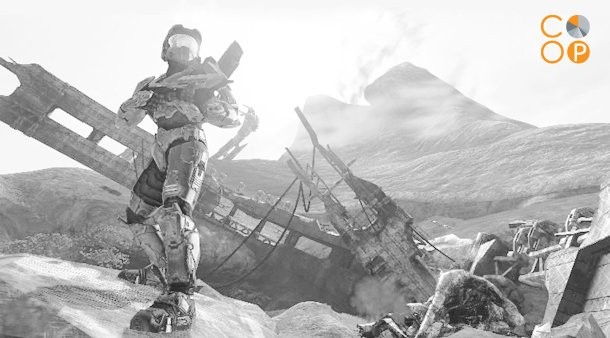
On The Technical Restrictions of Split-Screen Play…
You’re probably starting to get the feeling that integrating co-op into big budget games isn’t a small endeavor. This is especially true when it comes to split-screen play. But what’s the big deal? We were dividing our screen four-ways back in GoldenEye’s day. The experts address some of our co-op qualms, starting with the issue of split-screen play.
“When we shipped the first Army of Two we had no idea how popular split-screen play would be to our customers. While online co-op is always going to be the better experience due to screen real estate, we found that a huge amount of people will go through the campaign on split screen over and over. It’s also worth noting that split screen is challenging to build but in very different ways. For example, you don’t need to be concerned about a networking model since its offline, but game performance (meaning frames/second) becomes a big factor. We found we needed to do a lot of additional work on the game to give players a good experience in split-screen play. We also make several split-screen only aesthetic optimizations. It definitely takes dedicated resources both on the code/art side to build it, but we believe it’s worth it.”
Reid Schneider, executive producer, Army of Two: The 40th Day
“Split-screen play is good to have for gamers who want to have multiplayer sofa gaming, but it is really a lot of work to integrate. It usually takes up much more of the power of the console to render multiple viewports, plus heads-up displays often become unreadable or clip, and areas of the game space have to be adjusted for visibility. Ask most programmers at the majority of studios out there if they enjoy working on split-screen and you're likely to get a knee in the groin.”
Cliff Bleszinski, design director, Epic Games
“There is a onetime cost to implementing split-screen technically, and from there the problem becomes one of frame-rate optimization. There are systems in the game that are being run twice as often as they were before you turn on split screen, so a bunch of the work is to make these systems run faster than they did before. For Left 4 Dead we felt it was one of the features that we just could not ship the game without, given the social nature of a co-op game. We have a lot of groups of gamers come by the office over the course of development that we watch play the game, and friends playing together on split screen got a lot more out of it than if they were separated.”
Erik Johnson, project manager, Valve
“Obviously you’re asking one console to do twice the work, so there are some trade-offs there. There were times in development where the engineers were like ‘Man, we should just cut this. This is just really difficult.’ I made sure we always remembered that we have a lot of customers, like me, that want to play with our friends. We want to sit on the couch and play together, and split screen is a great way to do that. It’s just an inconvenience to set up multiple Xboxes and multiple TVs and multiple PlayStation 3s. Supporting split screen is a really big deal. I think the fact that it was so successful is going to want to motivate us to want to look at some new things in the future, too. There might be other tradeoffs we have to make, but thinking we’re getting even more players split screen or how to simulate that across a network will be really important things to look at next. Man, I love the fact that it worked out, and that people are appreciating that feature. It wasn’t easy.”
Randy Pitchford, president and CEO, Gearbox Software

On Split-Screen Orientation…
Since we’re on the subject of split screen, how about letting us choose our own orientation? Horizontal works well for Gears of War’s expansive battlefields and vertical should play out well in The 40th Day’s towering cityscapes. And Resident Evil 5’s staggered thing sort of worked. Is it feasible to let us choose what is best for our particular setup? Or would it create more problems with HUD scaling? (We’re looking at you, Borderlands.)
“It really comes down to level design. For example on the campaign mode in The 40th Day, we do a vertical split screen as the levels have a lot of up/down focus. In versus mode we do a horizontal split screen as players need a wider view of the action. I think allowing players to choose would be an option long term, however we then have different performance and HUD issues to manage.”
Reid Schneider, executive producer, Army of Two: The 40th Day
“When we put split screen into Left 4 Dead one and had people try it out, it was pretty close to a split between what people preferred. Some of it varied based on where people were sitting, some of it was based on the game mode they were playing, and some was just personal preference for what was easier for them to read. As a result, we've always had the option for players to choose between horizontal and vertical split screen.”
Erik Johnson, project manager, Valve
“Yeah, I think the biggest thing we are looking at, and I¹m not sure it¹s even going to be possible, but if it is possible we want to do it, is to think about is well, if you have a 4:3 screen, we split-screen horizontally, and if you have a widescreen, we split-screen vertically. It automatically makes that decision based on your configuration. To put that choice into the customers hand would be good, but we’re not sure we are going to be able to do that because of the way the platforms work, and how we can update the software. We’re looking at that.”
Randy Pitchford, president and CEO, Gearbox Software
On Simultaneous Online and Split-Screen Play…
If developers go the extra mile and offer split-screen play, chances are a double date with another set of online couch buddies is out the window. Some developers have found ways around the difficulties of integrating split screen and online play. Others still struggle with it.
“We’re supporting this as well. It was something we wanted to have integrated from day one. Again, it comes down to performance implication on the game, but we know the community and fans really appreciate the feature so we built it in.”
Reid Schneider, executive producer, Army of Two: The 40th Day
“To be frank, it entails a heck of a lot of unfun work requiring many programmers.”
Cliff Bleszinski, design director, Epic Games
“The other thing too about connectivity is that there’s no feasible way for the host to simulate the game and the split screen and to simulate that all across the network. It just doesn¹t work. There’s just too much data and too much information, and the performance of these machines can¹t handle that. If the game was simpler, if it wasn’t a large connected world, if there were fewer characters in the world, and if the spaces were smaller, kind of like Left 4 Dead, feasibly we could have done that. But with the size of the world, the amount of content that exists in it at one time, the amount of characters in it, and the complexity of the game simulation, the host if we did that would run it at like four frames per second. It just can’t happen.”
Randy Pitchford, president and CEO, Gearbox Software


On Player-Specific Difficulty Settings…
We all know it’s not fun to carry an inferior player through a game. It’s frustrating to repeatedly sacrifice your health reserves in Left 4 Dead or take massive damage while reviving a friend in Borderlands. So we ask, is it tricky to implement player-specific difficulty settings to level the playing field?
“This is also something new we included in Army of Two: The 40th Day. We really wanted players to be able to team up and have a great experience, but at the same time at a level of difficultly of their choosing. This needs to tie directly into how the game’s health/damage systems are constructed. Again, as long as you make the day one decision to make the game co-op it can be done. Personally, I think it’s an awesome feature to support as it can widen the audience.”
Reid Schneider, executive producer, Army of Two: The 40th Day
“With the tools we use to increase or decrease skill in the game, like scarcity of health packs in the world, it would be really hard to solve with multiple skill level players playing at the same time. One of the benefits we see of having a more experienced player play with a less experienced one on split screen is that they have a lot more information on how to help the newer player just by looking at their screen and talking to them, so in a way split screen is a great place for players of varied skill levels to have fun.”
Erik Johnson, project manager, Valve
“It's actually not that difficult; sometimes it's simply a matter of tweaking the right values. We did this with Gears 2 and I anticipate we'll be exploring that option in future products. It's nice for me to be able to play on medium while my friend, who is ridiculously good, can play on insane at the same time and we can both feel equally challenged.”
Cliff Bleszinski, design director, Epic Games
And finally, On Paying to Play…
Okay, Okay. We get it. Creating co-op games is difficult and demanding of the technology. This being true, we asked our readers one final question. Would they be willing to pay to play? To shell out a premium to help offset the expenses of integrating co-op? In our poll an overwhelming number of participants (69.2 percent) said no – that co-op is part of a package deal. Only 14.3 percent said they would part with an extra $10 to offset the costs. But is this even a good idea? Our readers and experts seem to share the same opinion.
“I don’t really see a two-tiered pricing scheme as possible for this type of game. Again, since we build it from the ground up with a co-op focus, we want that to be the standard edition of the game. I also, would not want divide our customers between those who have co-op and those who don’t. We really want everyone to experience the game the way it is designed.”
Reid Schneider, executive producer, Army of Two: The 40th Day
“We don't really approach products and features this way. We're trying to build an experience that hopefully a lot of people will buy, have fun with, and feel like it was money well spent. Once you start thinking about how your customers are going to directly cover the costs of developing a specific feature in your game (and one as significant as co-op) then you're probably headed down the wrong track.”
Erik Johnson, project manager, Valve
Despite the problems that plague co-op titles, gamers should overall be pleased with the resurgence in popularity of cooperative social play. We’re sure that time and technology will help to iron out the remaining kinks. Such as narrative-based achievements only being awarded to player one. Ugh.
If you didn’t have the chance to participate in our survey, you’ve got another opportunity. Does the co-op renaissance excite you? What’s your favorite co-op title? How about the co-op qualm that most annoys you? Give us your cooperative wishlist in the comments below.

Get the Game Informer Print Edition!
Explore your favorite games in premium print format, delivered to your door.
- 10 issues per year
- Only $4.80 per issue
- Full digital magazine archive access
- Since 1991









